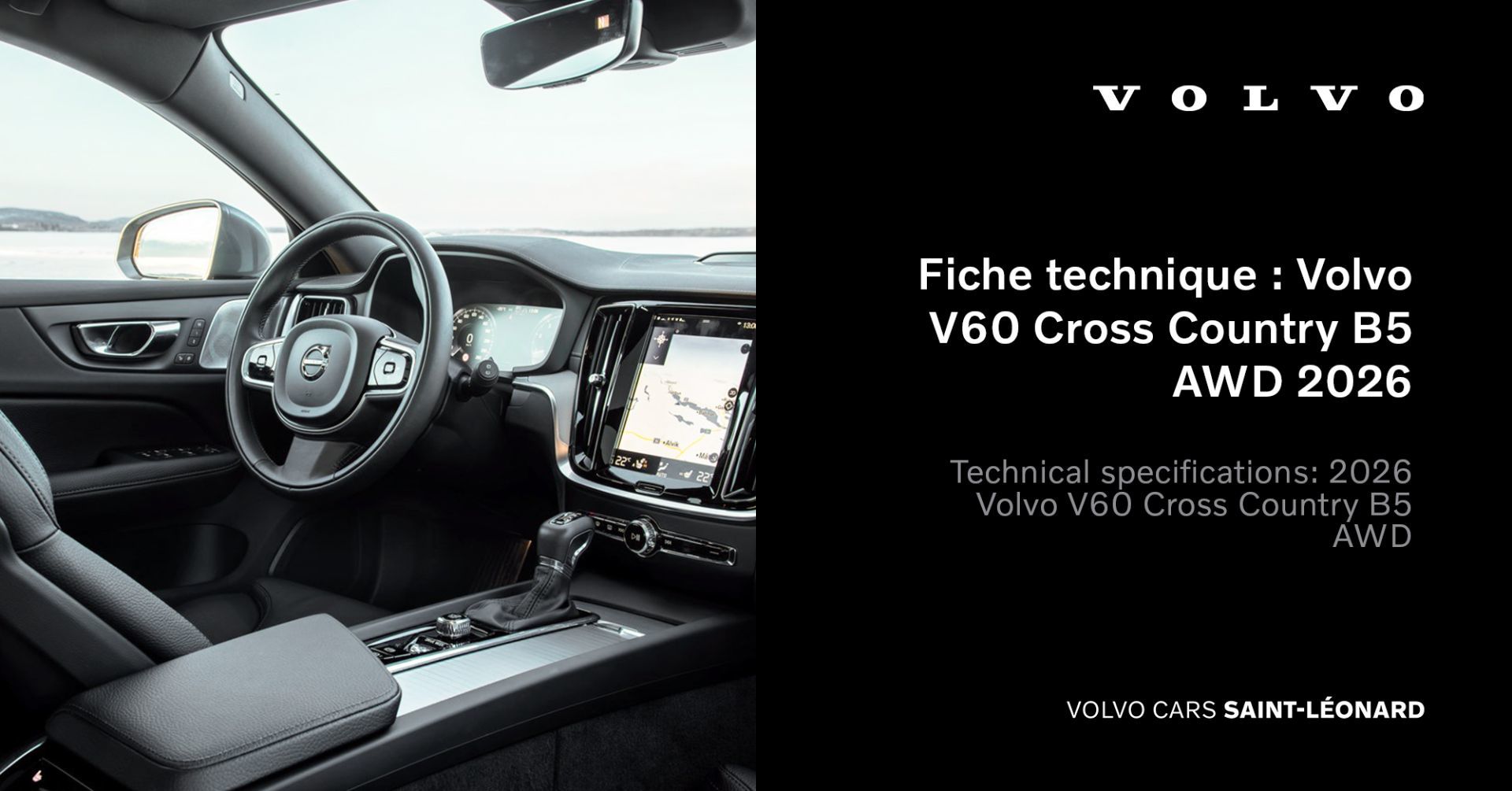
The Volvo XC60 is now the best-selling Volvo car of all time.
With over 2.7 million units sold worldwide, the Volvo XC60 has just surpassed a monument of Swedish automotive history: the Volvo 240. This ranking...
Read moreVolvo Cars Saint-Léonard
Volvo Cars Saint-Léonard
4315 Boulevard Métropolitain Est, Montreal, QC, H1R 1Z4
If you're in the process of buying a new electric vehicle, there's a good chance you'll start your journey online by looking for different information.
In fact, a recent study shows that a potential buyer uses 11.3 sources of information before heading to the dealership to speak with a sales representative.
Which brings us to our topic - during your research, you've no doubt read articles or seen videos from Europe showing different autonomies from Quebec.
In this article, we demonstrate why there is a difference in range between Europe and here, and which standard to rely on.
Around the world, various independent agencies measure the range of electric vehicles, depending on where they are marketed.
Firstly, there's the CLTC standard, which is specific to China and is used to estimate the range of electric vehicles sold on this market.
This standard aims to reflect typical Chinese driving conditions as closely as possible. That is, it focuses on urban driving scenarios with medium and low speeds, taking into account the many frequent stops due to traffic.
The results tend to show higher autonomies than those calculated by EPA or WLTP standards, as test conditions are less mixed.
Then there's the WLTP standard, a test method introduced in 2017 to measure electric vehicle range more realistically than the old NEDC cycle.
It simulates driving conditions closer to the real thing, including various speed phases (low, medium, high, very high) and taking into account stopping, acceleration and deceleration. The test lasts around 30 minutes and covers a distance of 23.25 km.
WLTP is used in Europe and tends to give realistic range figures, but rather generous in relation to drivers' actual use.
Finally, there's the EPA standard, which is also used in the USA to measure the range of electric vehicles. Considered one of the most stringent methods, it focuses on more complex driving scenarios, including two main cycles:
In concrete terms, the range figures given by the EPA are often more conservative than in Europe with its WLTP standard. For example, a Volvo EC40 has a range of 486 km with the Single Motor in France, while in Quebec, the range is reduced to 478 km.

There are three important reasons why car brands have to pass these tests.
Firstly, tests such as EPA, WLTP or CLTC are required by governments to ensure that vehicles meet energy efficiency standards.
Secondly, these tests provide consumers with standardized, reliable information on the range of vehicles offered for sale. Without these tests, manufacturers could provide misleading figures.
Standardized testing ensures that all manufacturers are assessed according to the same criteria, enabling fair competition. It also encourages manufacturers to innovate and improve the energy efficiency of their vehicles to remain competitive.
In practical terms, the EPA standard is the one that comes closest to actual driver use. However, the tests carried out in Ann Arbor, Michigan are not 100% representative of the Quebec climate. Over there, the climate is milder in winter than in Quebec, which means that over this period, range may be affected.
In any case, whether it's the CLTC, WLTP or EPA standard, these figures will never be 100% representative of your daily journeys. It's best to always assume a margin of error of 10% to 15%, depending on the data provided.
By 2025, we'll have no fewer than 5 100% electric vehicles available at our dealerships.
Consult our online inventory and book your test drive today with one of our advisors.
Would you like to test drive one of our electric Volvos?

The Volvo XC60 is now the best-selling Volvo car of all time.
With over 2.7 million units sold worldwide, the Volvo XC60 has just surpassed a monument of Swedish automotive history: the Volvo 240. This ranking...
Read more
Technical specifications: 2026 Volvo V60 Cross Country B5 AWD
The Volvo V60 Cross Country B6 AWD is a raised wagon that targets modern families and active professionals looking for an alternative to SUVs,...
Read more
2026 Volvo EX40: new features, photos, and pricing
Following the electrification of the Volvo EX40 in 2023, the Swedish brand continues to update its compact SUV to better meet your needs. For the...
Read more